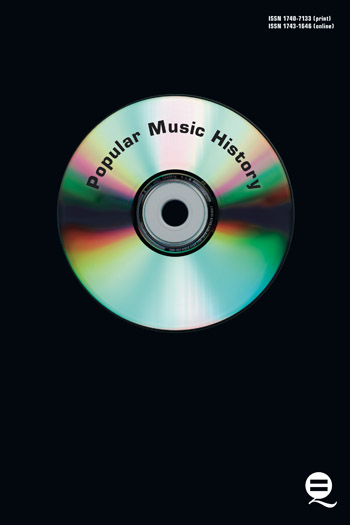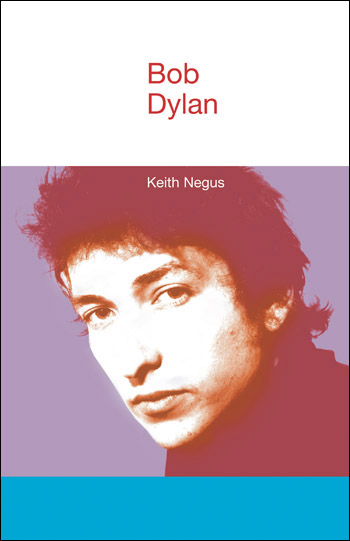Buddy Holly
Dave Laing† [+–]
University of Liverpool
Dave Laing, who died suddenly in January 2019, was a writer, editor and lecturer, and Honorary Research Fellow at the University of Liverpool. His works include The Sound of our Time (1969), Buddy Holly (1970), One Chord Wonders: Power and Meaning in Punk Rock (1985) and (with Phil Hardy) The Faber Companion to 20th Century Popular Music (1995). He is an editor of the Continuum Encyclopedia of Popular Music of the World whose first volumes were published in 2003.
Buddy Holly occupies an enigmatic position in pop and rock music history, partly because of his premature death at the age of 22 in a plane crash in February 1959. Designated in Don MacLeans hit American Pie as the day the music died, this enabled him to be included in the trope the death of rock and roll, alongside the less drastic musical demises of Elvis Presley (joined army), Chuck Berry (imprisoned), Jerry Lee Lewis (disgraced) and Little Richard (joined priesthood).
The view that Holly belongs only to the 1950s has often obscured the originality of his music. In an era when the music world was divided into hard rockers, soft pop balladeers and hardcore Nashville country and western singers, his songs transcended these boundaries. Equally innovative was his use of the recording studio as a laboratory, a place to experiment with sounds. In addition, the two guitars, bass and drums line-up of his group the Crickets was the major contributor to the small-group template for generations of rock musicians down to the present day.
As well as becoming an influence on other musicians in a conventional sense, Buddy Holly has had his own lengthy musical and cultural afterlife. Over a half-century after the day the music died, Holly has been the longest-serving member of the group of singers and musicians for whom death inaugurated a new phase of their careers.
This book provides a new perspective on Buddy Holly, discussing his career and art in the context of his unique contribution to the swiftly evolving music scene of the late 1950s and his posthumous 50-year multi-media career through films, stage-shows and copious reissues of his recordings.
Series: Icons of Pop Music
Table of Contents
Prelims
1
The author introduces his approach to the volume whereby he will study “Buddy Holly” as ‘the precipitate of a network of practices involving numerous other individuals (e.g. musicians, disc jockeys, promoters, producers), technologies (e.g. radio, jukebox, phonography, electric guitar), and artefacts, most notably sound recordings. He proceeds then to describe the ‘musicscape’ of Lubbock, West Texas. After a brief section on the city of Lubbock, the remainder of this chapter describes five sites or musicscapes in which Buddy Holly and his informal network of friends and collaborators were immersed in the mid-1950s. The term “musicscape” is derived from the concept of soundscape elaborated by Canadian musicologist Murray Schafer, who defined (Schafer 1977).
2
This chapter and the following one trace the brief professional career of Buddy Holly as a recording artist (Chapter 2) and performer (Chapter 3) between 1956 and 1959. It begins with a section on earlier tracks made by Holly with Bob Montgomery and others during the period covered in Chapter 1.
3
On Stage, 1956–1959 [+–] 54-77
This chapter continues tracing the professional career of Buddy Holly, covering his ‘one night stands’ professional residencies, circuits and tours between 1956 and 1959.
4
The Recordings, 1955–1959 [+–] 78-105
In the two years between his first meeting with Norman Petty and his death, Buddy Holly recorded just under 50 songs, some of which were issued under his own name and some under that of the Crickets. A small number were not released until after his demise.1 These are almost all of the recordings upon which his reputation rests and this chapter is a commentary on them.
5
After the Day the Music Died: Memorializing [+–] 106-128
The chapter discusses the memorialization of Buddy Holly following his death and the way in which his postumous career unfolded, contending that Holly’s posthumous career has been the combined and often conflictual and contradictory product of a variety of human and institutional agencies in an actor network that established itself after February 1959.
6
This chapter further explores the mechanisms whereby Buddy Holly’s posthumous career has been managed, repressing his absence and making him present, however momentarily. There are different ways of demonstrating that “Buddy Holly Lives”. The individual members of the actor network involved in the representational side of the posthumous career include musicians, producers, writers and actors; the institutional members include music publishers, record companies and the Holly estate.
End Matter
Buddy Holly Timeline [+–] 158-166
Key evetns in the life of Buddy Holly (1936-1959) and his posthumous career, to 2009.
Endnotes 167-174
References 176-180
Index 181-194

ISBN-13 (Paperback)
9781845536275
Price (Paperback)
£22.95
ISBN (eBook)
9781845537975
Price (eBook)
Individual
£22.95 / $23.95
Institutional
£22.95 / $23.95
£22.95 / $23.95
Institutional
£22.95 / $23.95
Publication
01/04/2010
Pages
200
Size
216 x 140mm
Readership
students, general readers
Illustration
black and white photos
Availability
Available in North America from Indiana University Press







